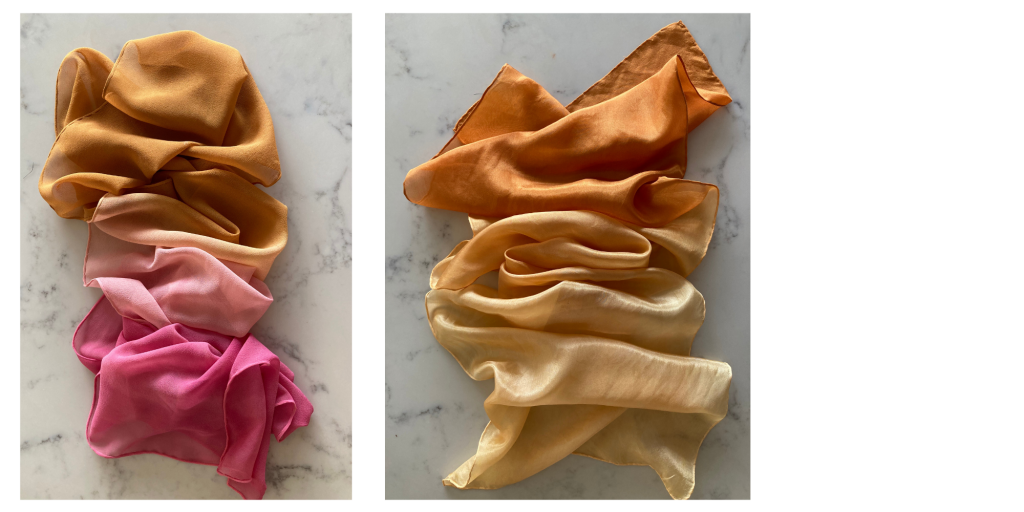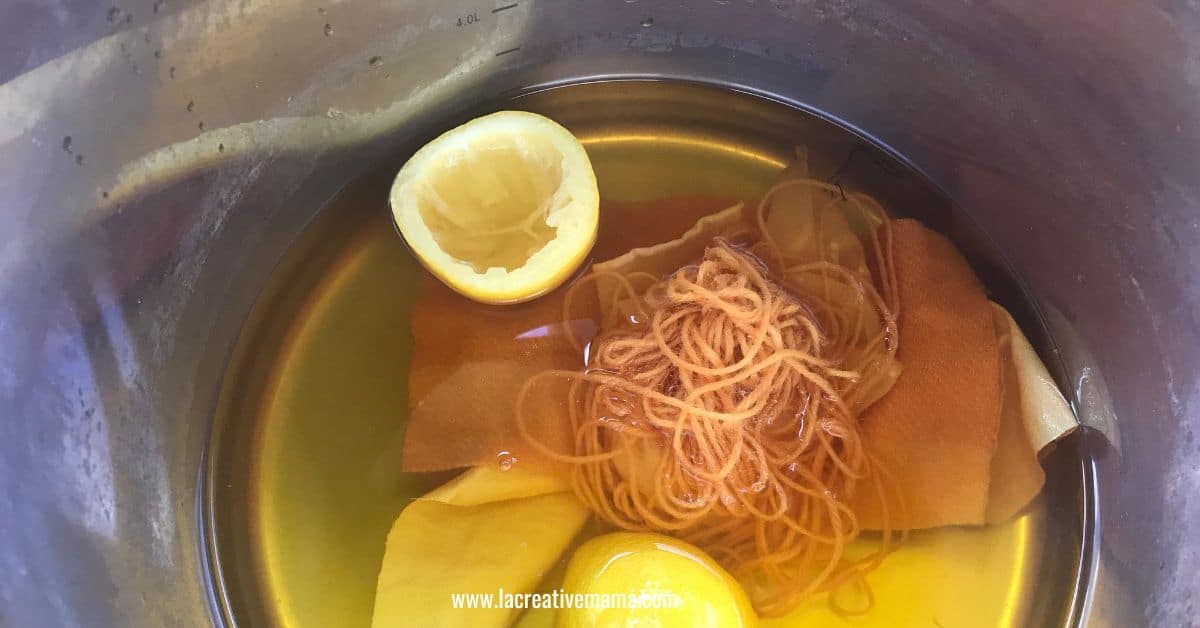Hi Creative Mamas! Welcome to another post about natural dyeing. In this article I want to talk about the all important dye pot and how it influences or affects the final color that you can obtain from different natural dyes.
This post contains affiliate links, which means I receive a small commission, at no extra cost to you, if you make a purchase using this link. Please see my disclosure for more details.
My preferred dye pot is a large stainless steel pot. I have two of these and they are both my go to pot to make my mordant bath and my dye solution bath.

There are other type of pots which are also suitable for natural dyeing:
- Aluminum pot
- Iron pot
- Enamel pot
- Copper pots or canning pots
All these pots can be purchased in a thrift store or a grocery store.
The main thing to remember is that a stainless steel pot will not interfere with the natural dye color that each natural dye can deliver.
As best practice, I like to start my process by knowing the true color dye from each of my natural dyes. You can check out the best 40 natural dyes to use here!
Grab the FREE NATURAL DYES LIST
Complete the form below to download the FREE list of the best 40 dyes to use in natural dyeing! Save time and frustration!
Once you know which is the base and true dye color from your natural dyes, you can then choose to enhance, modify or extend your color palette by using different pots such as iron, copper or aluminum pots.
You can also modify the colors by using modifiers such as iron water.
Best stainless steel pots for natural dyeing
Stainless Steel Stock Pot – 24 Quart (22 liters approx.)
This heavy duty dye pot is suitable for Induction, Ceramic, Glass and is Halogen Cooktops Compatible. This is a great option to have as a main dye pot.
I normally use this pot for all my mordanting bath as well as my dyeing baths.

Stainless Steel Stock Pot 20-Quart (19 liters approx.)
I like to use this pot for all my color extractions or as a second dye bath. I usually extract the color of a few natural materials at the same time so having these smaller pots (and more affordable) is a great option for me!

I love having these smaller pots for tie dyeing and multicolor dyeing!

16 1.5-Quart Stainless Saucepan (15 liters approx.)
I also have a few of these handy. They are great for dyeing smaller yarns or for using with dye color extracts.

The above are my essential dye pots that I feel every natural dyer needs in order to create beautiful natural color from a variety of natural dye materials.
How to choose a good dye pot
Size
For best results, it’s important to consider the size of your pot. You will need to make sure that it can hold enough water so that your natural fibers can move freely inside the pot.

This will avoid having spots or streaks in your naturally dyed fabrics. Check out this article that describes the most important mistakes to avoid in natural dyeing!
Lid
I like having a lid because I like mordanting my natural fabrics and yarns and letting them rest overnight in the mordanted bath.
I simply cover the pot with the lid and allow the fibers to reach room temperature by themselves inside the mordant solution.
Handles
Handles are very important because you will be working with cold water, warm water and hot water.

You need handles that won’t get too hot otherwise your hands will burn and you can have an accident if you suddenly let go of the dye pot.
Essential tool for natural dyeing
I have written a post describing the best tools to have for natural dyeing in order to make the dye process as easy as possible 🙂

Here are some of the basic tools that you will need:
- Wooden spoon
- Stainless steel spoon
- Heat source (electric burners /stove, etc)
- 100 % natural fibers (protein fibers or plant fibers /cellulose fibers)
- Natural dyes (plant materials)
- Mordants such as alum (avoid soy milk)
- Dust mask
- Dye pot
Please feel free to reach out with any questions that you may have!
Also you may want to check out some of the tutorials which were created inside my studio using my own stainless steel pots!
If you are interested in making natural color from food dyes such as avocado dyes, onion skins dyes and tea dye you will love these tutorials!
If you are keen on learning how to tie dye using natural dyes you will love this post as well as the tie dye t-shirt tutorial.


I read all over the internet to avoid copper and aluminum as those metals react with dyes.